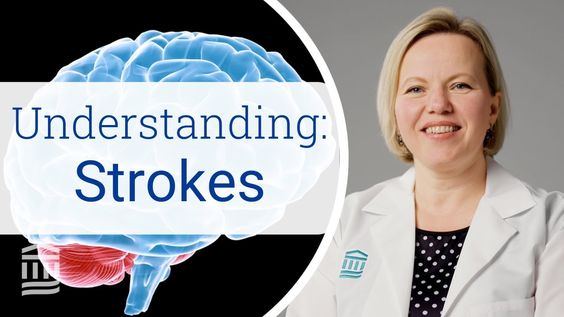Stroke is a medical condition that occurs when the blood supply to the brain is interrupted, either due to a blockage or a rupture of the blood vessels. This interruption can lead to brain cell death, resulting in permanent damage and disability. In this article, we will explore the causes, symptoms, and treatment options for stroke.

Causes of Stroke.
- High blood pressure
- Atherosclerosis (plaque buildup in blood vessels)
- Heart disease
- Diabetes
- High cholesterol
- Smoking

Symptoms of Stroke.
- Sudden weakness or numbness in the face, arm, or leg
- Sudden confusion or trouble speaking
- Sudden trouble seeing in one or both eyes
- Sudden severe headache
- Sudden loss of balance or coordination

Treatment Options for Stroke.
- Medications to dissolve blood clots
- Surgery to remove blood clots or repair blood vessels
- Rehabilitation therapy to regain lost function
The Silent Killer: Recognizing the Warning Signs of Stroke.
Stroke is often referred to as the “silent killer” because it can occur without warning, leaving little time for action. However, there are warning signs that can indicate a stroke is imminent. In this article, we will explore the warning signs of stroke and what to do if you or someone you know is experiencing them.
Warning Signs of Stroke
- Sudden weakness or numbness in the face, arm, or leg
- Sudden confusion or trouble speaking
- Sudden trouble seeing in one or both eyes
- Sudden severe headache
- Sudden loss of balance or coordination
What to Do if You Suspect a Stroke
- Call emergency services immediately
- Use the FAST test to identify stroke symptoms
- Provide first aid until help arrives

Stroke Prevention: Lifestyle Changes to Reduce Your Risk.
Stroke can be prevented by making lifestyle changes that reduce your risk factors. In this article, we will explore the lifestyle changes you can make to reduce your risk of stroke.
Lifestyle Changes to Reduce Stroke Risk
- Quit smoking
- Exercise regularly
- Eat a healthy diet
- Maintain a healthy weight
- Limit alcohol consumption
- Manage stress
Life After Stroke: Coping with the Emotional and Physical Challenges
Stroke can have a significant impact on a person’s quality of life, both physically and emotionally. In this article, we will explore the emotional and physical challenges of stroke recovery and provide tips for coping.

Emotional Challenges of Stroke Recovery.
- Depression
- Anxiety
- Mood swings
- Emotional lability
Physical Challenges of Stroke Recoverya
- Weakness or paralysis
- Difficulty with speech and language
- Difficulty with cognitive function
- Difficulty with daily activities
Tips for Coping with Stroke Recovery
- Seek support from family and friends
- Join a support group
- Practice self-care
- Set realistic goals
- Celebrate small victories

New Advances in Stroke Treatment: Hope for a Faster Recovery.
Stroke treatment has come a long way in recent years, with new advances offering hope for a faster recovery. In this article, we will explore the latest developments in stroke treatment and what they mean for patients.
New Advances in Stroke Treatment
- Endovascular procedures
- Stem cell therapy
- Robotics and artificial intelligence
- Personalized medicine
What These Advances Mean for Patients
- Improved outcomes
- Faster recovery times
- Increased accessibility
- More personalized care
